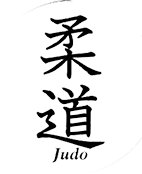In the past discussions have taken place on this and the old forum about suwari-seoi (popularly referred to in the US as "drop-seoi-nage) with regard to its danger for the knees. I have tried to explain that the throw is not at all dangerous or hard on the knees if you really know the throw, since you do not actually fall on your knees and throw, but the actual dropping on the knees is arrested by the counter weight of the opponent and the trajectory of the throw. Only when one does not properly know the throw and actually falls on the knees before throwing, or without proper coordination is it hard on the knees. Unfortunately this is often the case, and younger people are more commonly at risk since they are at an earlier stage in thelr learning curve with on the average less coordination and technique. I have then also argued that true experimental evidence did not exist, and that I had discussed a research set-up with our biomechanists. Unfortunately, our biomechanists had absolutely not interest in judo. This is common since many biomechanicsts tend to stick only with their own little field of research, and judo biomechanics are difficult and likely would expose the academic limits of many biomechanists. So, I regretted not having carried out that research.
I am, however, happy to say that a scholarly paper has recently appeared that did exactly that what I said needed to be done. Unfortnately, the paper is in Spanish, but has an English abstract. The findings of the paper are very much what I predicted. Indeed, the impact on the knees is very serious ... in the unexperienced and the younger, but significantly decrease the more experience and the more advanced one is !
So all in all, it isn't suwari-seoi that is dangerous, it is improperly performed suwari-seoi that is a risk for the knees !
Find the full paper here:
http://revpubli.unileon.es/ojs/index.php/artesmarciales/article/view/1176/952
I am, however, happy to say that a scholarly paper has recently appeared that did exactly that what I said needed to be done. Unfortnately, the paper is in Spanish, but has an English abstract. The findings of the paper are very much what I predicted. Indeed, the impact on the knees is very serious ... in the unexperienced and the younger, but significantly decrease the more experience and the more advanced one is !
So all in all, it isn't suwari-seoi that is dangerous, it is improperly performed suwari-seoi that is a risk for the knees !
Find the full paper here:
http://revpubli.unileon.es/ojs/index.php/artesmarciales/article/view/1176/952



